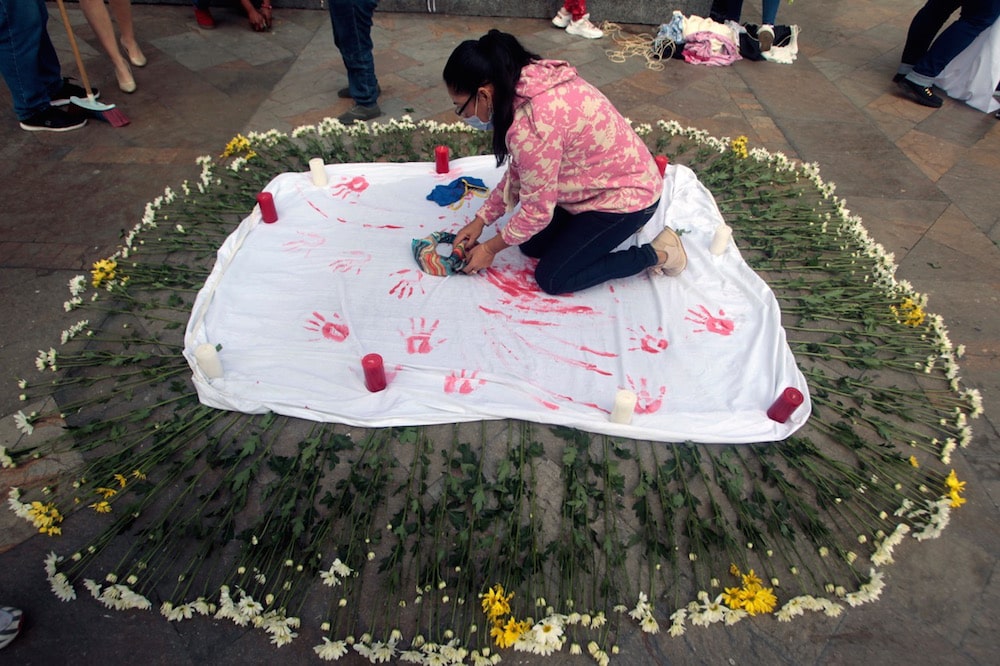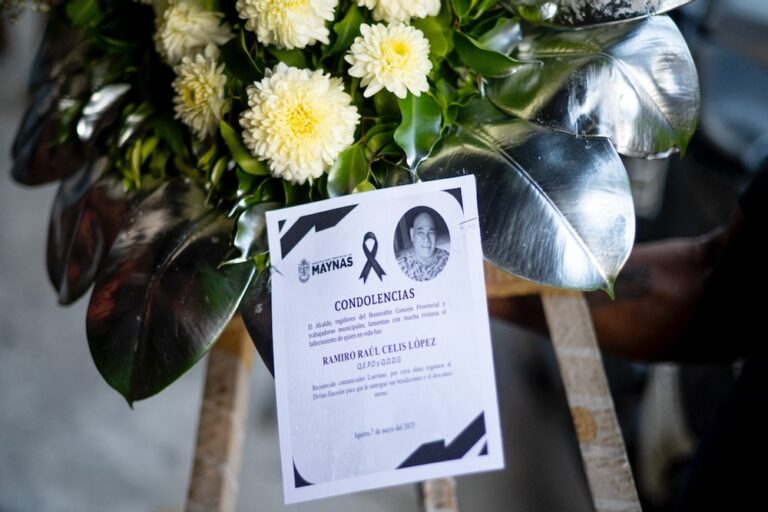February 2022 in the Americas: A free expression round up produced by IFEX's Regional Editor Laura Vidal, based on IFEX member reports and news from the region.
Our road to IWD: A celebration of learning and knowledge creation for a safer, freer internet for all
Without a doubt, the internet has been one of the strongest spaces for activism, advocacy, and education, but it has also provided a strong proxy for the kind of gendered violence we witness in the physical world. This violence impacts the ability of women and others to participate in these key civic spaces. As a response, women and LGBTQI+ organizations in the Americas have prioritized research into online violence, and what can be done about it.
Thanks to their work, and also to strategically communicating their findings, the internet has repositories of solid data that can be used to better understand violence online, the deep connections between the online and the offline world, and the many ways this violence can be confronted.
In addition to the work of established rights advocacy groups, many smaller, grassroots organisations and local communities in the region are helping expand this work through reports, useful language, websites, and even card games to imagine feminist technologies and talking circles.
The examples are many, and worth celebrating. Looking to IFEX members and their partners, we can find a glossary of violence, developed by IFEX member Fundación Karisma in Colombia, to help identify instances of violence online and what to do about them. Another IFEX member, Derechos Digitales, worked with Paraguayan digital rights organization TEDIC to develop a website devoted to showing how violence online and offline comes from the same source – and shares pretty much the same consequences – in an effort to address the misconception that what happens online is not part of the reality of women or members of the LGBTQI+ community.
More recently, both Fundación Karisma and TEDIC developed Libres y Segures en internet, a self-learning course around digital security, especially for LGBTQI+ groups, and Artigo 19 (Brazil) developed a guide to help women protect themselves during protests.
Other organizations, like Vita Activa and Acoso.Online are among the groups providing not only online resources, but also direct assistance to victims of violence, while Luchadoras in Mexico and Ancestra in Colombia share audio and video pieces that take into account the context of indigenous women in rural areas.
This work is playing a very important role in promoting and defending a healthy and inclusive civic space, in which the freedom of expression of all people can be respected.
Recently, this has been especially true for women’s reproductive health, and the right for non-gendered people to have their identities recognized in the region. In fact, February saw Colombia’s Constitutional Court make history when it decriminalized abortion on all grounds up to 24 weeks of pregnancy; and the recognition, again from Colombia, but also from Mexico’s Guanajuato’s state, of a person’s non-binary identity.
Venezuela’s attacks on the media gaining strength in the digital space
Venezuela’s information space has been limited in the last decade by a variety of aspects linked to the political and the economic crisis. One of them has been a paper crisis that left most newspapers out of circulation, and forced print media to become dependent on the internet, where they can find themselves blocked, or inaccessible to most people. At the same time, Venezuela’s year-long lack of investment in the telecommunications sector has translated into very poor internet services, but none of this has stopped government officials or internet providers from continuing to target independent media with ruthless persistence.
On 1 February, online outlets Efecto Cocuyo, Crónica Uno y EVTV were targets of temporary website blocks. Two days later, NGO and educational organization Fe y Alegría had its Twitter account hacked, which – according to IFEX member, Espacio Público – “has become a common practice against journalists’ and organizations’ online spaces.” On 9 February, outlet Tal Cual was the target of a DDoS attack. On 10 February, government official Diosdado Cabello, first vice president of the ruling party, threatened to “go for” newspaper El Nacional’s webpage in his own TV show – broadcast on state television – and two days later, internet censorship monitor VE Sin Filtro denounced that the page had indeed been blocked. That same day, Cabello had been given the headquarters of El Nacional (both the building and the land under it) in an irregular ruling over Cabello’s suit for defamation against the newspaper.
Blocking and censorship have become so common that outlets like Efecto Cocuyo shared brief tutorials showing how to use circumvention tools over social media.
[ Translation: Here at ‘Efecto Cocuyo’, we make illuminating journalism against blocks and censorship. In this video, we tell you how to download and install a VPN. ]
A useful solution, but one that is limited when Venezuela’s internet has been for years one of the slowest in the region, and when the whole system can fail, as it did on 21 February in five states at the west of the country.
As the attacks intensify, and more media spaces continue to be attacked or closed down, people and grassroots organizations continue to push for normalizing digital security conversations online. One initiative taking the lead is linked to VE Sin Filtro through their project Conexión Segura and their numerous online tutorials accessible to all people, regardless of how tech-savvy they may be.
A #MechanismForNicaragua
Human rights in Nicaragua reached a new low with the trials of opposition leaders and journalists, many of whom have been arbitrarily imprisoned since June 2021. Human Rights Watch called the trials a “sham”, and a “mockery of justice,” highlighting how the whole process was “a joint trial, with no due process, on charges of ‘conspiracy to undermine national integrity’, in most cases based solely on the defendants’ exercise of their right to free expression, that will most likely result in swift convictions for all.”
Nicaraguan journalist Miguel Mendoza, for example, received a 9-year sentence, journalist and presidential hopeful Miguel Mora, 15 years and student leader Lesther Aleman 13 years. Other journalists and political figures were handed equally harsh sentences based on very weak evidence, and after a process of only a few hours. The conditions of their imprisonment are also cause for alarm: in many cases the detainees were in isolation, or forbidden to communicate with their families or lawyers. Others reported abusive conditions, lack of food, and mistreatment.
The problems started intensifying in 2018 with the protests that marked the beginning of a deep political crisis, and the situation further degenerated with the electoral process that prolonged Daniel Ortega’s presidency last year. The UN, through the Human Rights Council, adopted a resolution in 2019 calling on the government of Nicaragua to adopt measures to resolve the crisis, but the result has been far from what the Council expected.
As the human rights crisis worsens, a coalition of organizations led by the Collective 46/2 is calling for the creation of an international mechanism to investigate Nicaragua’s violations and set a path towards accountability through the campaign “#MecanismoForNicaragua”. IFEX-ALC has joined the campaign, and hopes the mechanism will be set up in March, during the next meeting of the Council.
For more information about the organizations involved and the campaign, you can visit the coalition’s website.
In brief
Bolivia, Peru and Argentina see the safety of journalists deteriorate. The last months have brought a notable increase in attacks against journalists and media workers, as well as calls to address the violence and bring those responsible to account. In Bolivia, the October 2021 case of the abduction and assault of six journalists remains open, and unlikely to be resolved. In their communication about the case, the Asociación Nacional de Prensa (ANP) expressed concerns about “setbacks” in Bolivia’s civic space. In Argentina, the Foro de Periodismo Argentino (FOPEA) has also seen their concerns escalate in the last few months due to different aggressions, physical and verbal, against journalists in the exercise of their work. In Peru, organizations devoted to the safety and defense of journalists, among them the Instituto Prensa y Sociedad (IPYS-Peru), expressed deep concern for the state of freedom of speech in the country and asked IACHR Special Rapporteur for Freedom of Expression, Pedro Vaca, to visit the country.
Attacks against journalists continue in Brazil. Pirambu News founder Givanildo Oliveira was shot dead on 11 February, and earlier in the month a news crew was attacked while covering a police clash with a gang in Bahia. Meanwhile, authorities in Minas Gerais filed criminal defamation charges against journalist Thiago Herdy for a report on corruption in which it was alleged that state Attorney General Jarbas Soares Júnior “had requested that the state government include compensation for a project in the town of São Francisco, where several of his family members live, in a recent monetary settlement from a mining company.”
Another Haitian journalist killed, this time by the police. Maximilien Lazard was shot while covering a protest in Port-au-Prince. The police had opened fire on the protest, killing Lazard and injuring two other journalists. With Lazard, the list of murdered journalists in Haiti rises to three since the beginning of the year.
Noteworthy
IFEX member the Fundación para la Libertad de Prensa (FLIP) in Colombia, together with the Center for Justice and International Law (CEJIL) has received the 2022 award of the University of Columbia’s Global Freedom of Expression for their work in the case of Colombian journalist Jineth Bedoya before the Inter-American Court of Human Rights (IACtHR).
“Through this landmark judgment, FLIP and CEJIL highlighted the specific obstacles women journalists face, showed how sexual violence has been used as a tool for silencing and punishing women in the context of the armed conflict and demonstrated how this has a chilling effect on their journalism.”



